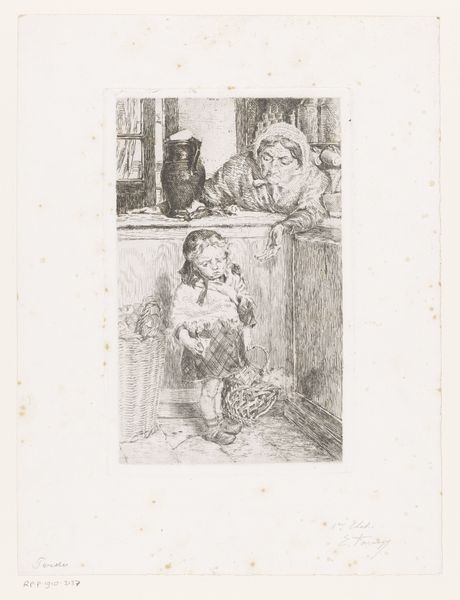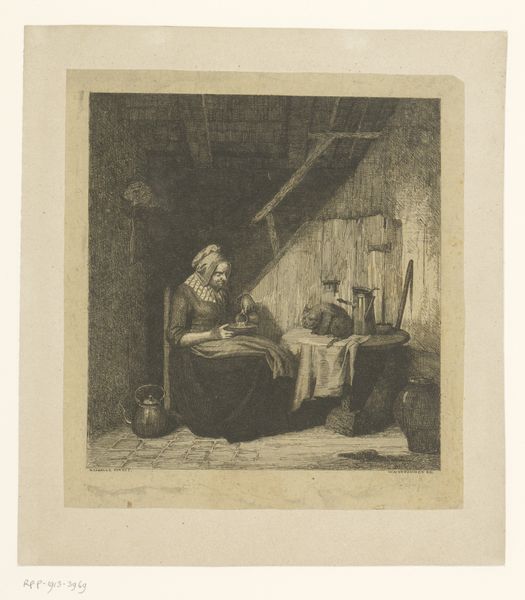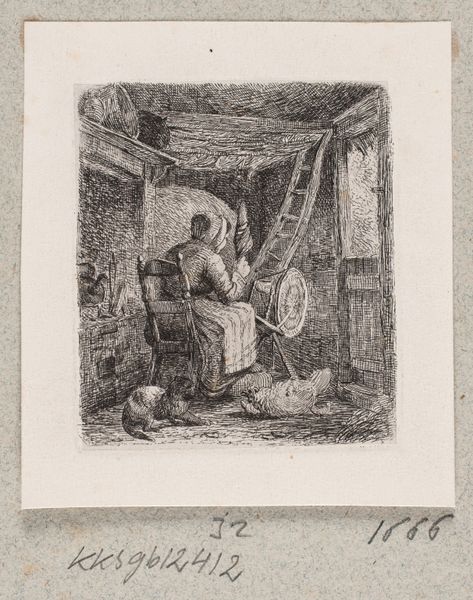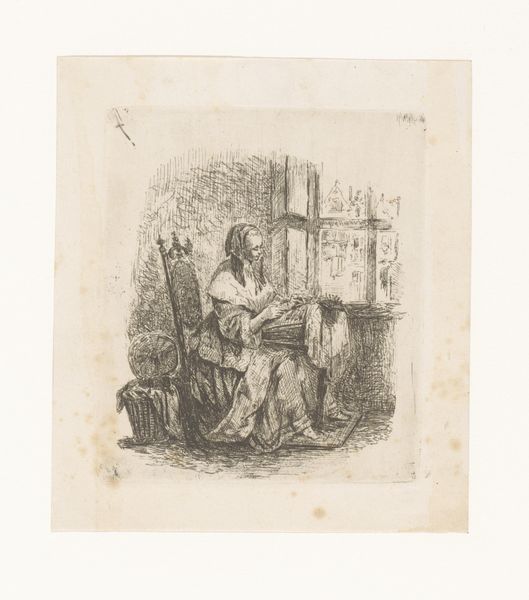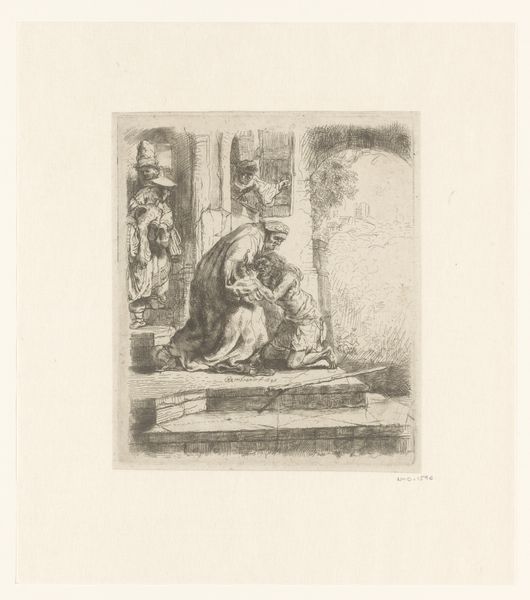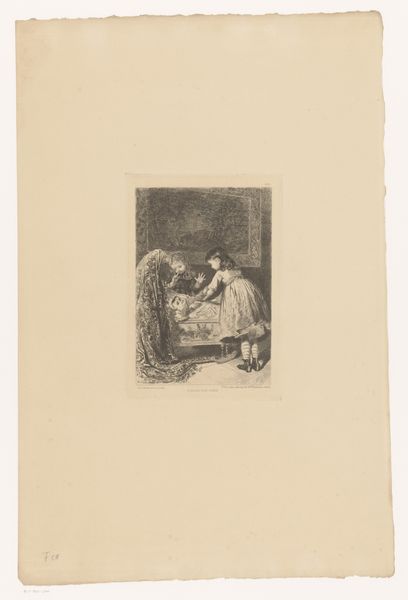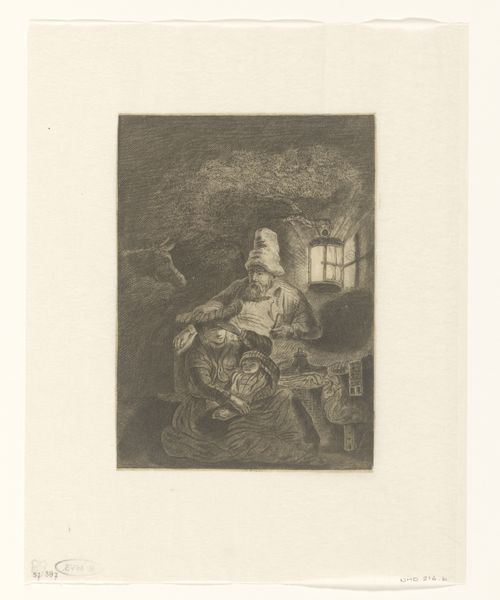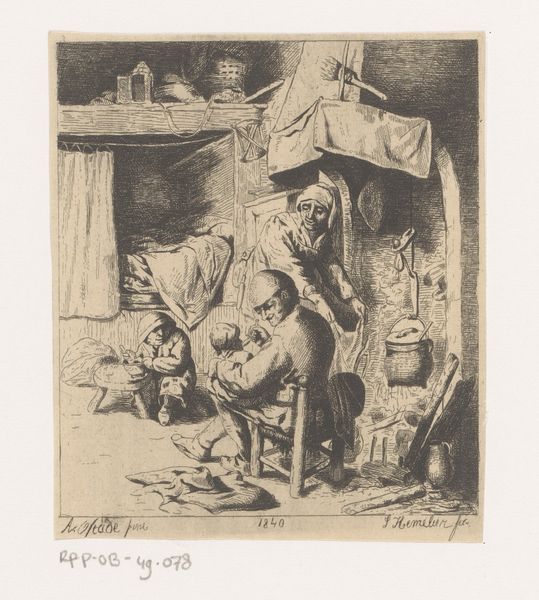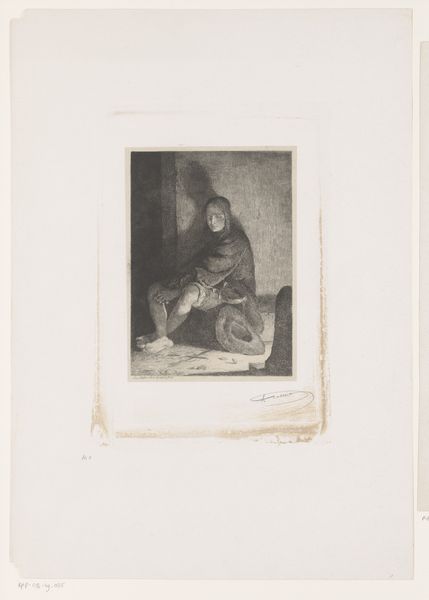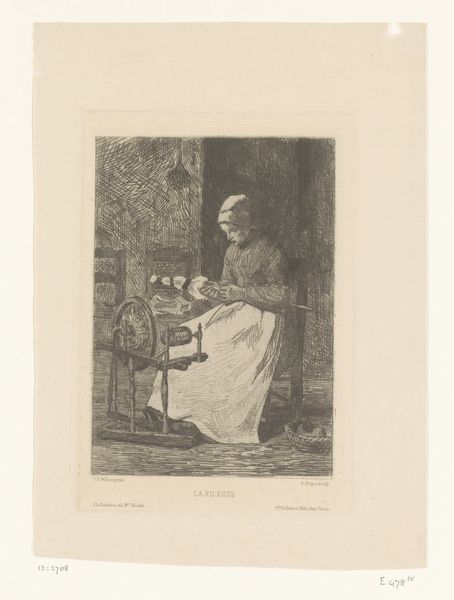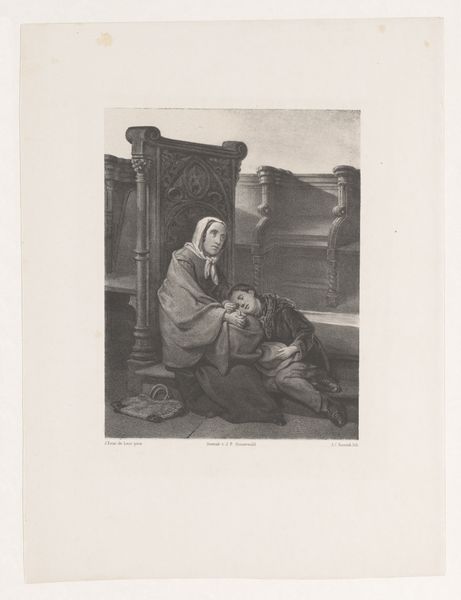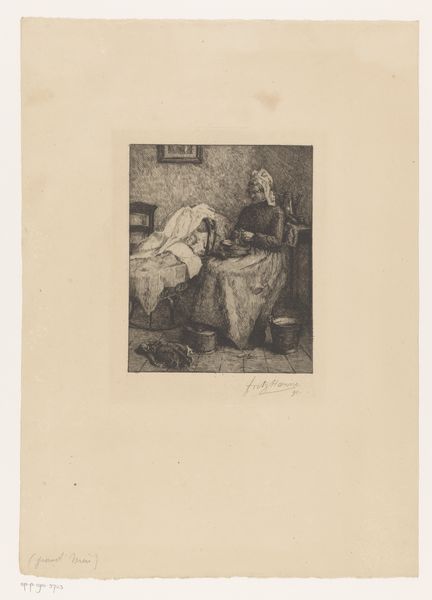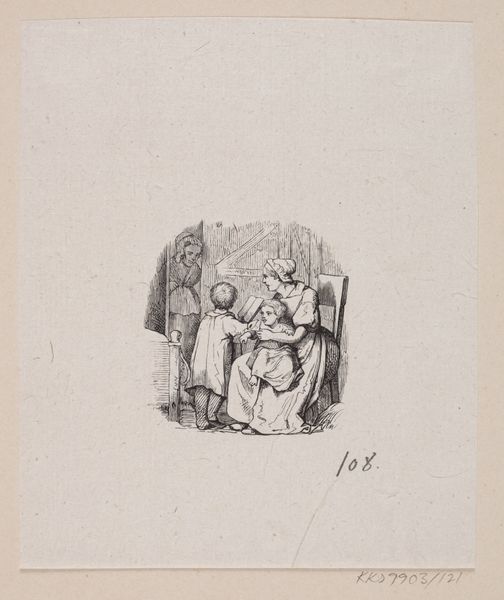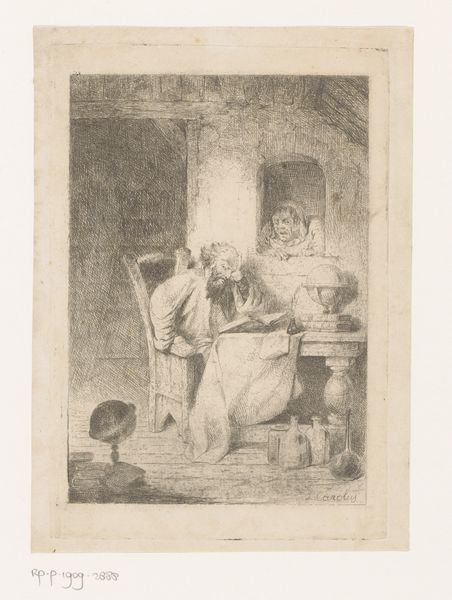
Slapende kantwerkster in een interieur met kat op tafel 1795 - 1873
0:00
0:00
drawing, etching, intaglio
#
portrait
#
drawing
#
etching
#
intaglio
#
genre-painting
Dimensions: height 159 mm, width 157 mm
Copyright: Rijks Museum: Open Domain
Editor: This etching, "Slapende kantwerkster in een interieur met kat op tafel" which translates to "Sleeping lacemaker in an interior with a cat on the table", by Ignatius Josephus Van Regemorter, made sometime between 1795 and 1873, really gives a sense of quiet domesticity. What do you see in this piece, looking at it from a historical context? Curator: Well, I notice how it reflects changing social structures. Etchings like this, widely distributed, played a crucial role in shaping the public’s perception of labor. Consider how the depiction of a lacemaker, a traditionally feminine occupation, subtly reinforces and possibly romanticizes these gender roles. Notice also the detailed interior – it tells a story about the space she occupies, almost theatrical. Editor: The interior details do give it a stage-like feel. What do you think about the political aspects, especially how the lacemaker is represented in the piece? Curator: It is less about immediate political events and more about the slow-moving politics of representation. How were working-class women viewed? How was their labor valued? This piece invites us to reflect on these broader questions. Is this intended as an idealized image or as a neutral portrayal? Editor: I hadn't thought about it that way. So, this is more about how art shaped societal values regarding labor than just showing everyday life? Curator: Exactly. Think about the rising middle class during that period and the art market which drove these images. What stories did people want to see, and what did that reveal about societal priorities? Editor: That's a totally different angle from just seeing it as a nice, quiet domestic scene. Thanks! Curator: Precisely. And considering the institutional framing in museums, we need to continuously ask, how are these works presented, and what interpretations are amplified or silenced?
Comments
No comments
Be the first to comment and join the conversation on the ultimate creative platform.
